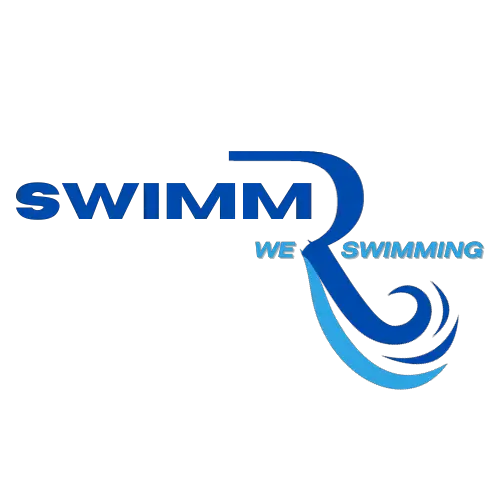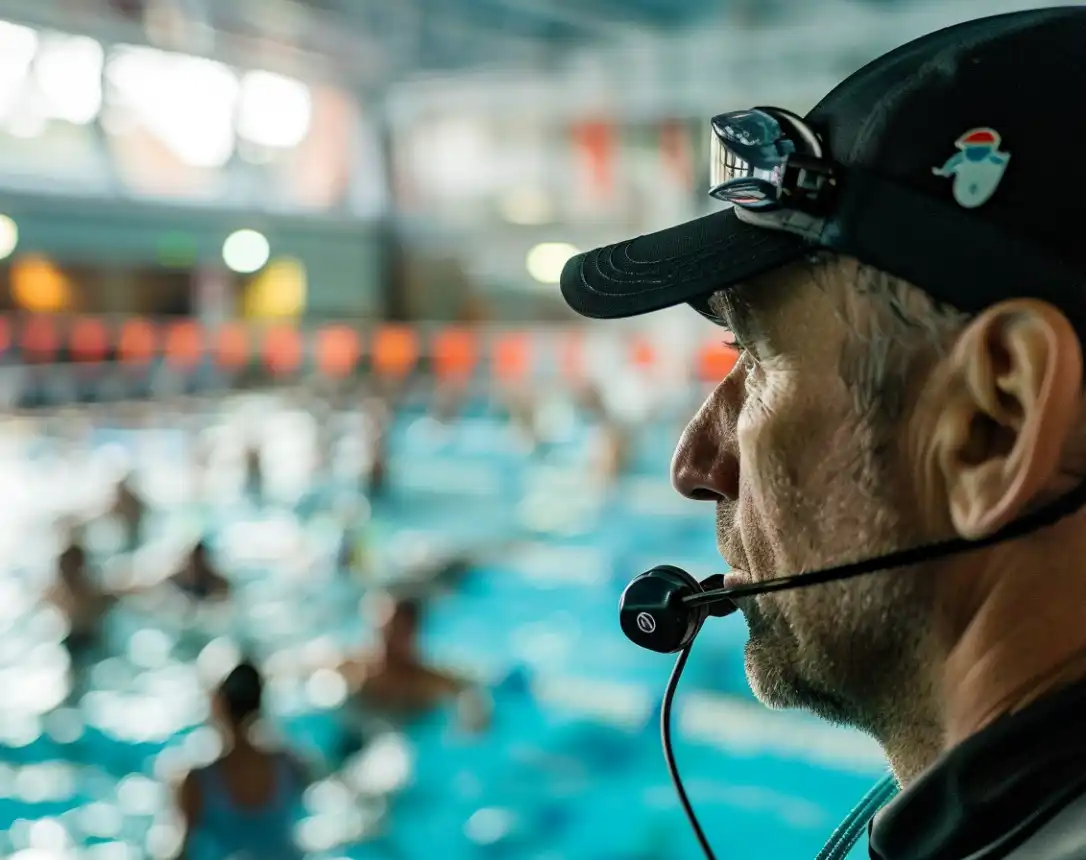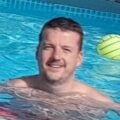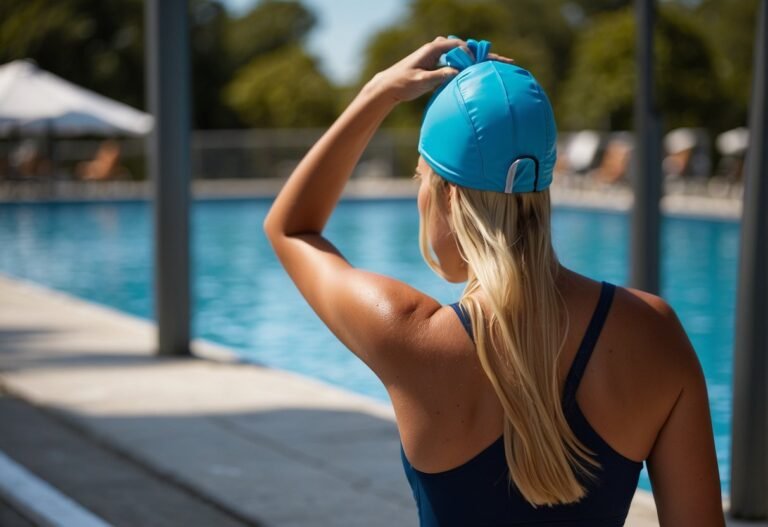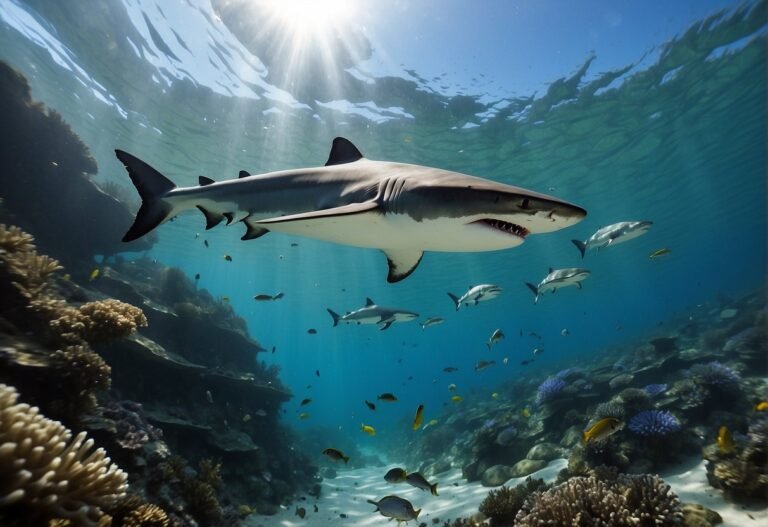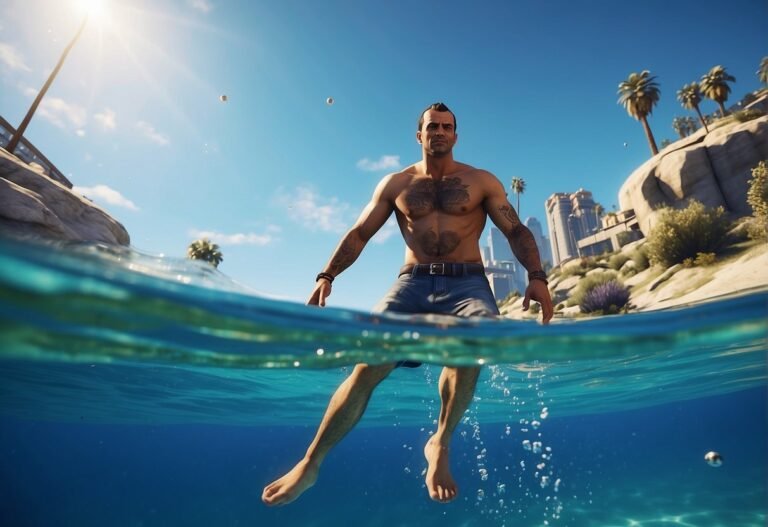Dive into the heart of every swimmer’s journey, where the pulse of their success beats strongest: the swimming coach. Imagine standing at the edge of greatness, your toes curled over the starting block, heart racing. There, by your side, is the person who transformed you from a mere enthusiast into a master of the waves.
This isn’t just about techniques or drills; it’s about the soul behind the stopwatch, the spirit guiding each stroke. Let’s explore the profound impact a coach has on turning the tide of ambition into a sea of achievements.
Becoming a Swimming Coach
I’ve found that the journey to becoming a swimming coach is as rewarding as it is challenging. It requires not only a passion for the sport but also a commitment to obtaining the right education and certification. Equipping oneself with the necessary skills and techniques is crucial to transforming swimmers from novices to experts.
Education and Certification
I needed to start my path with a strong foundation in education. Courses and formal training programs form the backbone of a coach’s expertise. Certification is a must-have; it’s non-negotiable. A coaching license typically begins with a Level 1 credential, advancing to Level 2 as experience grows. For those aiming at the top, obtaining an ASA Level 2 Certified or ASCA Gold Seal Certificate reflects a high standard of coaching proficiency. The certification process involved coursework and passing exams, ensuring that I was well versed in coaching principles.
Skills and Techniques
Developing an understanding of effective technique and proper mechanics is vital. My coaching toolbox includes skills essential for training swimmers at every developmental level. Detailed video demonstrations are invaluable, and studying material from experts like Russell Mark has sharpened my ability to identify and correct mechanics. It’s about finding that perfect blend of knowledge and hands-on practice to bring out the best in my swimmers.
Advanced Coaching Techniques
I’ve explored the depths of advanced coaching techniques, tapping into the genius of minds like Dave Salo. Their approaches transform swimmers from proficient to extraordinary, emphasizing effort, precision in pacing, and meticulous attention to nutrition, health, and recovery. These methods aren’t just about pushing limits; they’re about redefining them.
Developing Swimmer Performance
Stroke refinement is crucial. Swimmers must strive for impeccable technique to reduce drag and increase propulsion. In my practice:
- Effort and Consistency: Each swimmer’s effort is monitored to ensure a balance between intense training and adequate rest.
- Individual Pacing Strategies: Tailoring pacing techniques to match every swimmer’s unique abilities and goals is a game-changer.
- Stroke School Integration: Techniques from elite programs like the Stroke School can significantly enhance a swimmer’s efficiency in the water.
Advanced techniques are not one-size-fits-all. They require a bespoke approach, crafted with a swimmer’s individual strengths and weaknesses in mind.
Health and Safety Awareness
The well-being of swimmers is paramount. I incorporate:
- Nutrition Planning: A well-structured diet specific to the swimmer’s training regiment bolsters overall performance and recovery.
- Health Management: Regular health assessments are essential to prevent overtraining and facilitate peak physical condition.
- Safety Protocols: Adhering to strict safety guidelines minimizes the risk of injuries.
Rest is not an afterthought; it’s a strategic tool. Implementing structured recovery periods within the training schedule ensures swimmers remain at the peak of their game both mentally and physically.
Professional Development
As a swimming coach, embracing professional development has revolutionized the way I train my athletes. From cutting-edge clinics to enriching educational offerings, my journey is a testament to continuous learning and leadership advancement.
Continuing Education
Clinics: I regularly participate in in-person and online clinics to stay abreast of the latest swimming techniques and training methodologies. My coaching experience grows with each session, whether it’s mastering the nuances of stroke mechanics or exploring innovative workout regimens.
Online Clinics: The internet has been a game-changer, offering a plethora of educational offerings. I’ve completed several online courses that have fortified my knowledge base, ensuring I bring fresh ideas to the poolside.
Leadership and Communication
Motivation and Feedback: The core of my coaching philosophy revolves around leadership and communication. I foster discipline and confidence in my swimmers through clear and consistent feedback. I maintain open channels via email and social media, involving parents as partners in the process.
Inspiring through Passion: My relentless passion for swimming is contagious, inspiring not just my athletes, but also myself to push beyond the boundaries. I’ve discovered that leadership is not just about guiding others; it’s equally about personal evolution, reflecting a commitment to my professional development.
Swimming Coach Community
I’ve always been passionate about the way a strong community can propel us forward, and as a swimming coach, the sense of unity and support is truly unparalleled. Let’s take a dive into the vital associations and how they foster connections within this thriving network.
Associations and Memberships
Joining an association such as the American Swimming Coaches Association (ASCA) is a strategic move for any coach aiming to enhance their career. ASCA offers membership that opens doors to an array of member benefits including education, certification programs, and influential networking opportunities. For example, ASCA members have access to:
- Exclusive coaching clinics and world clinics
- Cutting-edge research and resources
- Job placement services and professional development
Moreover, being part of USA Swimming or partnering with SwimAmerica can magnify a coach’s impact by advocating for the sport and ensuring their mission aligns with broader goals such as swimmer safety and performance.
Building Connections
Diving into the swimming coach community means more than just attending events. It’s about establishing meaningful relationships that lead to partnerships and sponsorships, thus enriching my experience and resources. Initiatives to get involved range from local club meets to international competitions, allowing for diverse networking interactions. Advocating for the sport and its athletes often leads to strong bonds within the swimming community, and these connections can provide a wealth of knowledge and mutual support.
Engaging with this vibrant community is never a solo journey, and each connection reinforces our shared mission to advance the sport of swimming.
Regulations and Requirements
In the swimming world, I’m always thrilled to talk about the standards and guidelines coaches need to navigate. The roadmap to successful coaching is paved with various certifications and memberships, each with its own set of stipulations. Whether I’m coaching in the warmth of the UAE or the dazzling coastlines of Tunisia, these are must-haves for professionals like me!
Certification and Memberships
Certifications:
My pursuit of coaching begins with obtaining the right certifications. Depending on the country, the specifics might vary, but these are some of the common elements:
- Background Check: Essential for ensuring a safe environment.
- Gold Seal Certificate: Marks the cream of the crop in coaching credentials.
Membership Fees:
- UAE, KSA, Oman, Bahrain, Qatar, Kuwait, Iraq, Jordan, Lebanon, Egypt, Sudan, Libya, Tunisia, Algeria: Membership fees can range extensively, adapting to local economic contexts.
Global Coaching Opportunities
Diving into international waters, the buzz of compliance becomes even more critical. Before I welcome global coaching opportunities, I must meet international standards and respect local regulations. Each country adds a layer of excitement with its unique requirements:
| Country | Compliance Focus |
|---|---|
| UAE | Local federation endorsement |
| Kuwait | Ministry of Sports validation |
| Tunisia | Professional sports permit |
| Algeria | Recognition by national swim committee |
It’s a mesmerizing challenge to align with each nation’s sports ethos while upholding the global spirit of swimming.
Marketing and Outreach
Marketing and outreach are integral to my success as a swimming coach. I’ve found that a robust digital presence and strategic partnerships amplify my coaching brand, allowing me to connect with swimmers and sponsors alike.
Digital Presence and Branding
I’ve taken to the digital waves by establishing a strong online identity on platforms like SwimmingCoach.org. My focus:
- Engagement: Regular social media posts with training tips and success stories, creating a community vibe.
- Professionalism: Sleek, easy-to-navigate website featuring my coaching philosophy and successes.
- Visibility: SEO optimization to ensure I appear in searches for “swimming coach” right at the top.
Collaborations and Sponsorships
I’ve teamed up with trusted swimming brands. My primary partners:
| Brand | Type of Collaboration |
|---|---|
| FINIS | Gear Sponsorship |
| LSC | Event Partnerships |
These collaborations help me reach wider audiences, and gear sponsorships, like with FINIS, allow my swimmers to access top-notch equipment. Hosting events with Local Swimming Committees (LSC) fosters community spirit and showcases my coaching skills to local talent.
Managing Coaching Business
When building my coaching business, precision in operational strategies and robust financial management have been my keystones. Having a game plan that comprehensively covers these aspects has been crucial for my success.
Operational Strategies
To keep my training sessions impactful, I streamline scheduling with software that manages bookings and cancellations efficiently. I establish clear communication channels with swimmers and their families using a mix of newsletters, emails, and social media. Here’s how I approach it:
- Daily Operations: Utilize swim-specific management software
- Swimmer Progression: Apply personalized training metrics for each athlete
- Safety Protocols: Implement up-to-date lifeguarding and first aid practices
Financial Management
My financial management is as disciplined as my coaching. I track every penny, from membership fees to equipment expenses, ensuring sustainable growth. Budgeting is done meticulously with an eye on reducing overheads without compromising the quality of training provided. Here’s a snapshot:
- Revenue Streams:
- Membership fees: Primary income
- Merchandise: Additional revenue
- Expense Tracking:
- Pools: Major expenditure
- Equipment & Utilities: Carefully optimized costs
FAQ – Frequently Asked Questions
What makes a great swimming coach?
Greatness in a swimming coach lies in their ability to inspire, tailor training to individual needs, and foster a love for the sport beyond competition.
How do I choose the right swimming coach?
Look for passion, expertise, a track record of success, and a coaching style that resonates with your personal goals and learning preferences.
Can a swimming coach improve my technique?
Absolutely! A skilled coach will refine your technique, boost efficiency, and elevate your performance, transforming good swimmers into great ones.
Thank you for diving into the world of the swimming coach with us. Share your thoughts below or on social media like Instagram or Pinterest—we’d love to hear from you!
